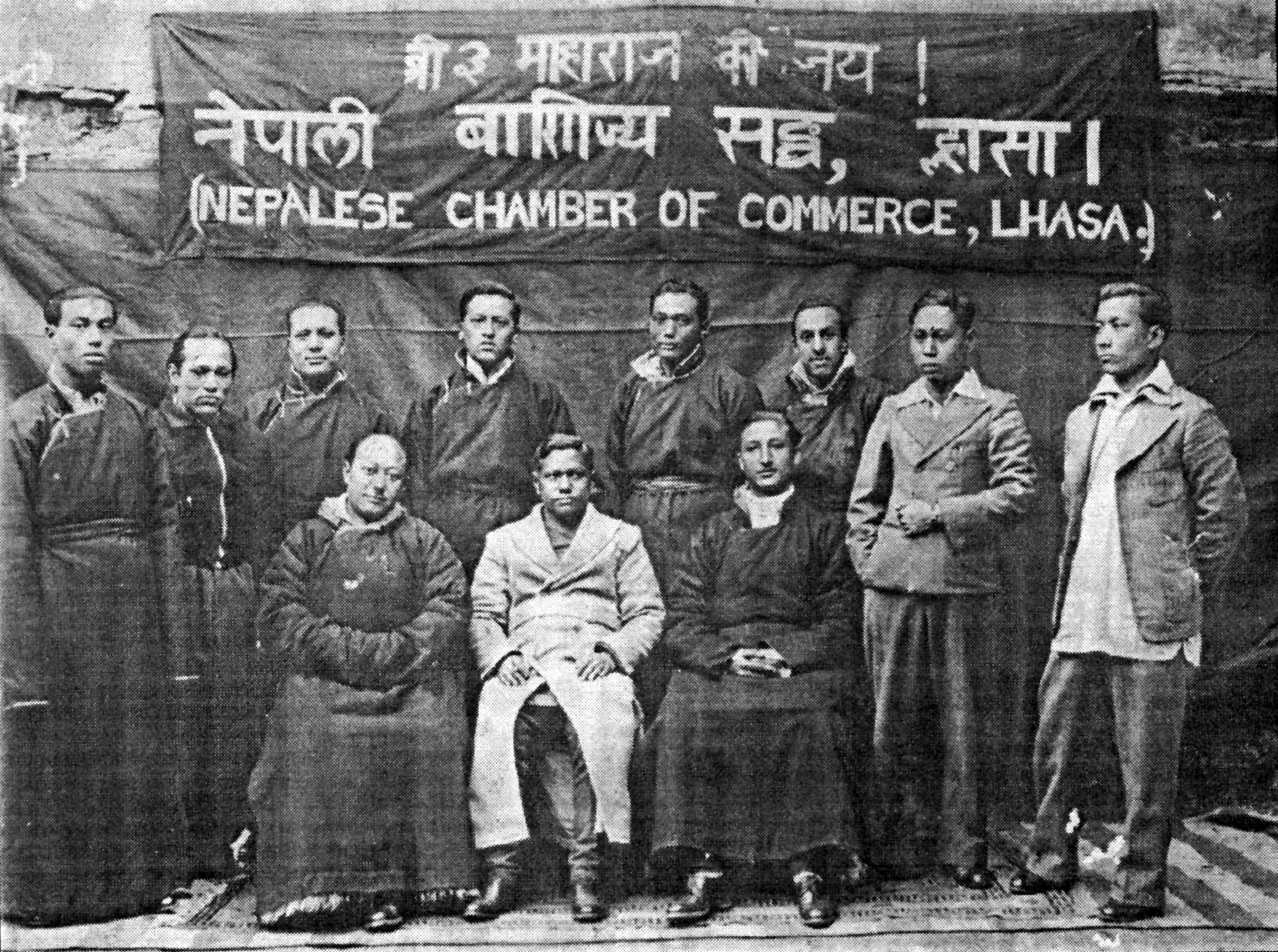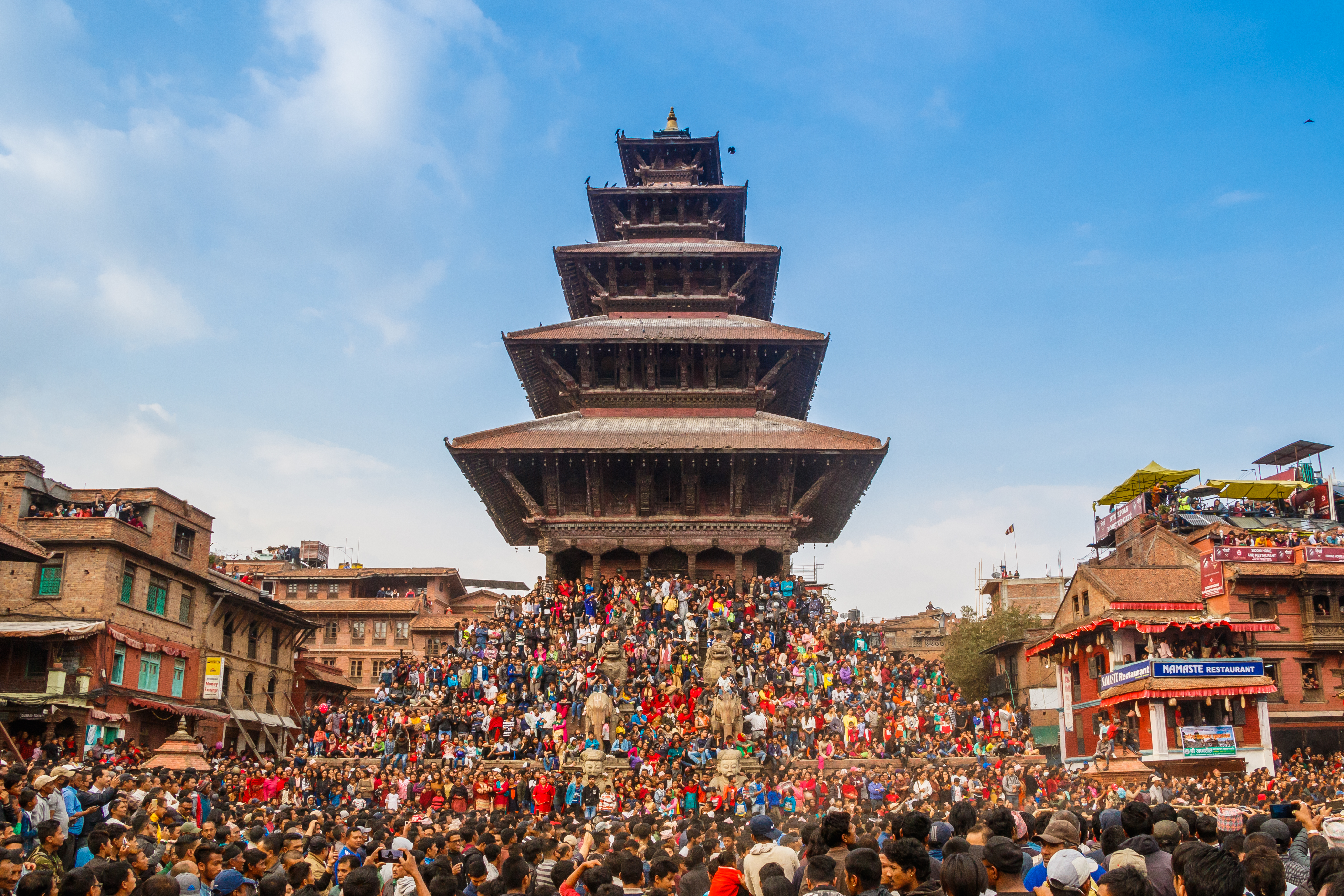|
Dhimay
Dhimay, Dhimaya ( new, धिमय्) or Dhime is a traditional Nepalese drum of the Newar people. According to the Hornbostel–Sachs classification, it belongs to the category of double-headed cylindrical membranophone A membranophone is any musical instrument which produces sound primarily by way of a vibrating stretched membrane. It is one of the four main divisions of instruments in the original Hornbostel-Sachs scheme of musical instrument classification. .... Description The drum is rather big compared to other drums played by the Newars in Nepal. The size of this instrument varies from diameter of 40 inches to 51 inches and length of 17 inches to 21 inches. The shell of the drum is made of wood or metal. Sometimes wooden drums are partly covered with metal foil. The shape of old Dhimay drums is mostly irregular, formed by the natural shape of the piece of wood being used to make the drum body. Modern drums are either cylindrical or slightly barre ... [...More Info...] [...Related Items...] OR: [Wikipedia] [Google] [Baidu] |
Newa Music
Newa music, also spelled Newar music, is traditional music developed in Nepal by the Newars. The music has its roots in classic Hindu and Buddhist music. It evolved with incorporation of folk music of the Kathmandu valley and its peripheries. Musical instruments mainly consist of percussion and wind instruments. Traditional music Traditional music refers to the music from the 16th century during the rule of King Mahendra Malla to the first decade of the 20th century. Traditional songs consist of hymns that describe various deities, songs about love and marriage, ballads, rice transplantation and historical songs in the form of narratives. The traditional musicians worship the Newar god of music and dance Nasah Dyah. Traditional Newar music has been arranged into a particular schedule. One of the dominant forms of traditional Newar music is Dapha music. Dapha music is classical Newar music that probably originated during late Lichhavi period and flourished in the Malla period ... [...More Info...] [...Related Items...] OR: [Wikipedia] [Google] [Baidu] |
Newar People
Newar (; new, नेवार, endonym: Newa; new, नेवा, Pracalit script:) or Nepami, are the historical inhabitants of the Kathmandu Valley and its surrounding areas in Nepal and the creators of its historic heritage and civilisation. Page 15. Newars form a linguistic and cultural community of primarily Indo-Aryan and Tibeto-Burman ethnicities following Hinduism and Buddhism with Nepal Bhasa as their common language. Newars have developed a division of labour and a sophisticated urban civilisation not seen elsewhere in the Himalayan foothills. Newars have continued their age-old traditions and practices and pride themselves as the true custodians of the religion, culture and civilisation of Nepal. Newars are known for their contributions to culture, art and literature, trade, agriculture and cuisine. Today, they consistently rank as the most economically and socially advanced community of Nepal, according to the annual Human Development Index published by UNDP. ... [...More Info...] [...Related Items...] OR: [Wikipedia] [Google] [Baidu] |
Newar
Newar (; new, नेवार, endonym: Newa; new, नेवा, Pracalit script:) or Nepami, are the historical inhabitants of the Kathmandu Valley and its surrounding areas in Nepal and the creators of its historic heritage and civilisation. Page 15. Newars form a linguistic and cultural community of primarily Indo-Aryan and Tibeto-Burman ethnicities following Hinduism and Buddhism with Nepal Bhasa as their common language. Newars have developed a division of labour and a sophisticated urban civilisation not seen elsewhere in the Himalayan foothills. Newars have continued their age-old traditions and practices and pride themselves as the true custodians of the religion, culture and civilisation of Nepal. Newars are known for their contributions to culture, art and literature, trade, agriculture and cuisine. Today, they consistently rank as the most economically and socially advanced community of Nepal, according to the annual Human Development Index published by UND ... [...More Info...] [...Related Items...] OR: [Wikipedia] [Google] [Baidu] |
Bisket Jatra
Biska Jatra, is an annual event in Bhaktapur, Dhapasi, Madhyapur Thimi and Tokha and other places in Nepal. The festival is celebrated at the start of the new year on the Bikram Sambat calendar, however, the festival itself is not related to Bikram Sambat. Origin Legend has it that this celebration is the "festival after the death of the serpent". Various areas of Bhaktapur city celebrate this festival according to their own rituals. The most eventful places are Taumadhi Square and Thimi Balkumari. A chariot carrying the statue of Lord Bhairava is pulled by hundreds of people to towards upper (''Thaney'') and lower (''Koney'') neighbourhood as tug of war. Approximately a month earlier, the chariot is assembled near the Nyatapola temple. Observations The signature event on Bhaktapur Taumadhi kicks off the Biska jatra "dya koha bijyaigu" which means the god Bhairava is brought outside from its temple for the festival, it is a tug-of-war between the Thane (upper) and Kone (lower ... [...More Info...] [...Related Items...] OR: [Wikipedia] [Google] [Baidu] |
Membranophone
A membranophone is any musical instrument which produces sound primarily by way of a vibrating stretched membrane. It is one of the four main divisions of instruments in the original Hornbostel-Sachs scheme of musical instrument classification. According to Sachs, material, shape, skin(s), skin fastening, playing positions, and manner of playing. Hornbostel-Sachs The Hornbostel-Sachs scheme of musical instrument classification divides membranophones in a numeric taxonomy based on how the sound is produced: *21: by hitting the drumskin with a hand or object (most common form, including the timpani and snare drum) *22: by pulling a knotted string attached to the drumskin (common in Indian drums, and can be considered an example of a chordophone as well) *23: by rubbing the drumskin with a hand or object (common in Irish traditional music, an example is the bodhran) *24: by modifying sounds through a vibrating membrane (unusual form, including the kazoo) Length and breadth M ... [...More Info...] [...Related Items...] OR: [Wikipedia] [Google] [Baidu] |
Janabahaadya
Janabahaadya (Nepal Bhasa:जनबहा:द्य, Sanskrit: आर्यावलोकिर्तेश्वर) is one of the deities of Vajrayana Buddhism Vajrayāna ( sa, वज्रयान, "thunderbolt vehicle", "diamond vehicle", or "indestructible vehicle"), along with Mantrayāna, Guhyamantrayāna, Tantrayāna, Secret Mantra, Tantric Buddhism, and Esoteric Buddhism, are names referring t .... Also known as Seto Machhendranath. External links Janabahaal Home Page Newar {{asia-myth-stub ... [...More Info...] [...Related Items...] OR: [Wikipedia] [Google] [Baidu] |
Battle Drums
A battle is an occurrence of combat in warfare between opposing military units of any number or size. A war usually consists of multiple battles. In general, a battle is a military engagement that is well defined in duration, area, and force commitment. An engagement with only limited commitment between the forces and without decisive results is sometimes called a skirmish. The word "battle" can also be used infrequently to refer to an entire operational campaign, although this usage greatly diverges from its conventional or customary meaning. Generally, the word "battle" is used for such campaigns if referring to a protracted combat encounter in which either one or both of the combatants had the same methods, resources, and strategic objectives throughout the encounter. Some prominent examples of this would be the Battle of the Atlantic, Battle of Britain, and Battle of Stalingrad, all in World War II. Wars and military campaigns are guided by military strategy, wherea ... [...More Info...] [...Related Items...] OR: [Wikipedia] [Google] [Baidu] |
Drums
A drum kit (also called a drum set, trap set, or simply drums) is a collection of drums, cymbals, and other auxiliary percussion instruments set up to be played by one person. The player (drummer) typically holds a pair of matching drumsticks, one in each hand, and uses their feet to operate a foot-controlled hi-hat and bass drum pedal. A standard kit may contain: * A snare drum, mounted on a stand * A bass drum, played with a beater moved by a foot-operated pedal * One or more tom-toms, including rack toms and/or floor toms * One or more cymbals, including a ride cymbal and crash cymbal * Hi-hat cymbals, a pair of cymbals that can be manipulated by a foot-operated pedal The drum kit is a part of the standard rhythm section and is used in many types of popular and traditional music styles, ranging from rock and pop to blues and jazz. __TOC__ History Early development Before the development of the drum set, drums and cymbals used in military and orchestral music ... [...More Info...] [...Related Items...] OR: [Wikipedia] [Google] [Baidu] |
Jankwa
Jankwa (or Janko) is a Newar ritual in Nepal to commemorate the young, elderly and infants in the community A community is a social unit (a group of living things) with commonality such as place, norms, religion, values, customs, or identity. Communities may share a sense of place situated in a given geographical area (e.g. a country, village, .... Types of Jankwa There are two types of jankwa: * Macha jankwa, celebrated once *Jyah Jankwa (Bhim Ratharohan) which can be celebrated up to five times. References Newar {{nepal-stub ... [...More Info...] [...Related Items...] OR: [Wikipedia] [Google] [Baidu] |
Ganesha
Ganesha ( sa, गणेश, ), also known as Ganapati, Vinayaka, and Pillaiyar, is one of the best-known and most worshipped Deva_(Hinduism), deities in the Hindu deities, Hindu pantheon and is the Supreme God in Ganapatya sect. His image is found throughout India. Hindu denominations worship him regardless of affiliations. Devotion to Ganesha is widely diffused and extends Ganesha in world religions, to Jains and Buddhists and includes Nepal, Sri Lanka, Thailand, Indonesia (Java and Bali), Singapore, Malaysia, Philippines, and Bangladesh and in countries with large ethnic Indian populations including Fiji, Guyana, Mauritius, and Trinidad and Tobago. Although Ganesha has many attributes, he is readily identified by his Asiatic Elephant, elephant head. He is widely revered, more specifically, as the remover of obstacles and thought to bring good luck; the patron of The arts, arts and Science, sciences; and the Deva (Hinduism), deva of intellect and wisdom. As the god of beginn ... [...More Info...] [...Related Items...] OR: [Wikipedia] [Google] [Baidu] |
Krishna
Krishna (; sa, कृष्ण ) is a major deity in Hinduism. He is worshipped as the eighth avatar of Vishnu and also as the Supreme god in his own right. He is the god of protection, compassion, tenderness, and love; and is one of the most popular and widely revered among Indian divinities. Krishna's birthday is celebrated every year by Hindus on Krishna Janmashtami according to the lunisolar Hindu calendar, which falls in late August or early September of the Gregorian calendar. The anecdotes and narratives of Krishna's life are generally titled as ''Krishna Leela''. He is a central character in the ''Mahabharata'', the '' Bhagavata Purana'', the ''Brahma Vaivarta Purana,'' and the '' Bhagavad Gita'', and is mentioned in many Hindu philosophical, theological, and mythological texts. They portray him in various perspectives: as a god-child, a prankster, a model lover, a divine hero, and the universal supreme being. Quote: "Krsna's various appearances as a di ... [...More Info...] [...Related Items...] OR: [Wikipedia] [Google] [Baidu] |






